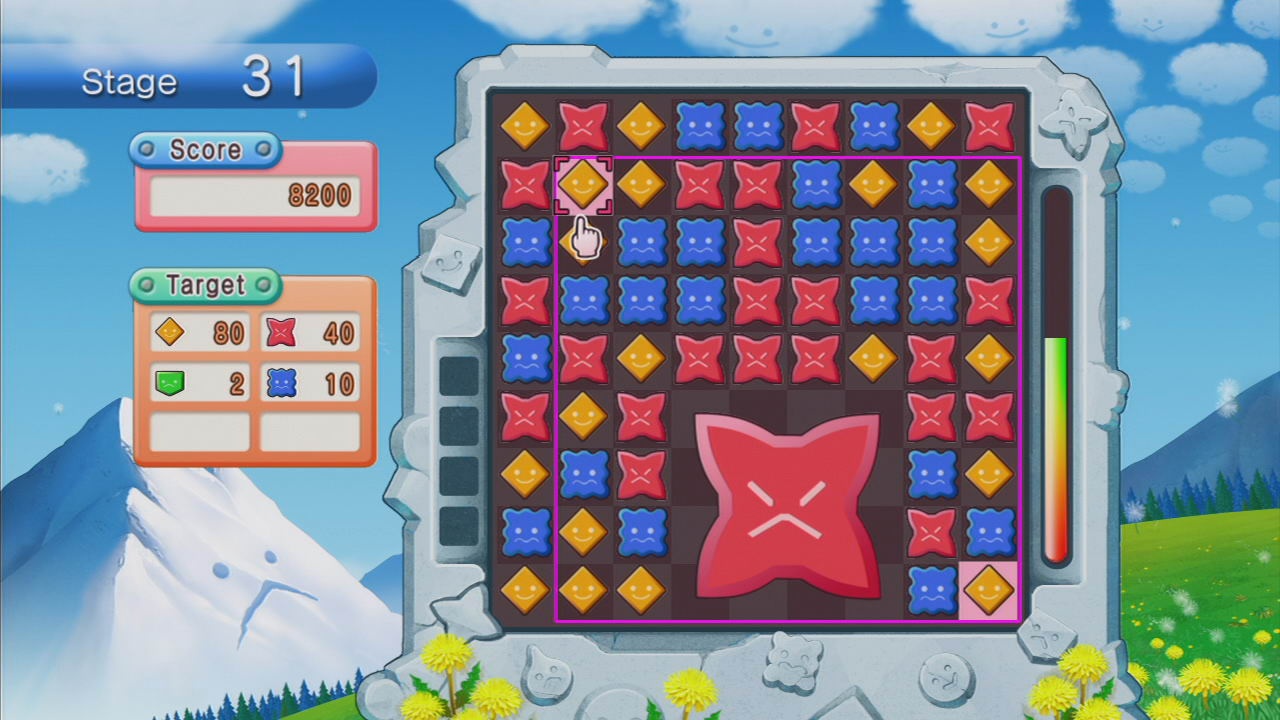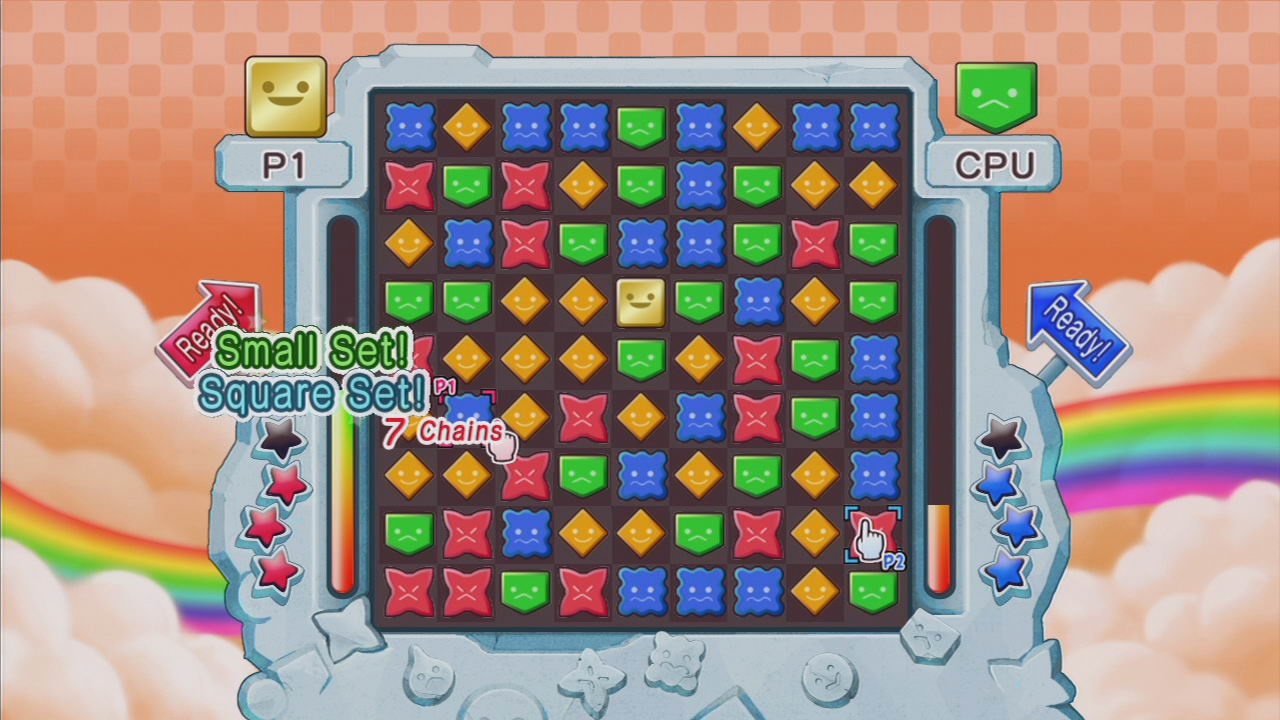Tetris is the standard by which all other block-falling games are judged, but Bejeweled is atop a tower of its own, serving as the gold standard for grid-based matching games. That game's deceptively simple gem-swapping mechanics slowly eased players into the experience before giving way to subtle maneuvering and intricate combos; a depth that made the game endlessly replayable. The basic formula of Bejeweled has influenced countless imitators throughout the years, but few have been able to match the joy of the original. Yosumin Live is developer Square's attempt at dethroning the king. Though its simple rules make it easy to pick up and play, it ultimately lacks the depth that makes Bejeweled so difficult to put down. The single-player experience relies far too much on random color placement, removing much of the skill present in better games. And though the two-player competitive mode gives the game a feeling of immediacy that is otherwise lacking, it too becomes stale before long. Yosumin Live is entertaining for a little while, but it won't suck you in like the best puzzles games do.

Yosumin Live presents players with a 9x9 board, chock-full of colorful shapes with frowns or smiles plastered on their faces. Your goal is to draw a box around the pieces, making sure the four corners are all the same color. The other tokens within the box can be any color as long as the corners are all the same, so it's all a matter of scanning the board and trying to pick out this specific pattern. The mechanic works well enough, letting you create a square as small as four or as large as the whole screen, but it quickly wears thin. When you create a match, those pieces are removed from the board and replaced with a collection of random colors. In similar games, pieces will fall down into empty spaces, making it possible to chain long combos together. Because everything is random here, it makes planning ahead impossible and removes much of the depth that makes other puzzle games so engaging. Furthermore, you cannot move the standard puzzle pieces around the board to set up larger rectangles. This creates a feeling of passiveness as you stare at the board without the ability to rearrange the gems.
The random nature of the boards is a big problem when trying to play through Endless Yosumin, which is the only noncompetitive mode in the game. There is a target goal in each of the levels, and once you meet the requirements, you are whisked away to the next stage. There are as few as one goal or as many as six per level, and they all entail matching a certain number of a specific color. Unfortunately, it is often impossible to find a match for the color you need, which can be agonizing when the clock is ticking down and the game refuses to give you enough pieces to make it feasible to pass the stage. The difficulty scales at a good rate, slowly introducing more colors and helpful power-ups as you get deeper into the game. Although you can retry a stage if you fail, you cannot save your progress. So every time you turn off your system, you will have to start from the beginning, playing through the easy early levels long after you have mastered them.

Aside from Endless Yosumin, you can play Battle Yosumin, either against the computer or squaring off against friends--local or online. Competitors share the board, so it becomes a race to recognize patterns, quickly form rectangles, and build up your own time meter while your opponent's meter falls. Each of the eight characters has a different ability, which adds a bit of variety to the pattern-recognition matches. Some of the characters focus on manipulating the time bar by either letting you add to your own or causing your opponent's bar to deplete quicker. A couple abilities are used to antagonize, though, so you can slow down or even stop your opponent for a few seconds, which can lead to some tense and frantic moments. Playing against a friend is fun for a while, but there is one major problem when playing against the computer: You cannot manually adjust its skill level, so you must start against an easy bot each time, slowly working your way up to harder competition.
Yosumin Live is a lot more fun conceptually than it is in practice. The simple mechanics are easy to pick up and fun for a while, but recognizing patterns without being able to manipulate the board yourself becomes repetitive before long. Competitive mode adds a feeling of urgency and is still the best aspect of this otherwise monotonous game, though it lacks the depth that could have made it really exciting. Yosumin is a novel twist to the Bejeweled formula, but the genre king can rest easy on its throne for the moment.